
The Apple II is a personal computer released by Apple Inc. in June 1977. It was one of the first successful mass-produced microcomputer products and is widely regarded as one of the most important personal computers of all time due to its role in popularizing home computing and influencing later software development.

The Electronic Delay Storage Automatic Calculator (EDSAC) was an early British computer. Inspired by John von Neumann's seminal First Draft of a Report on the EDVAC, the machine was constructed by Maurice Wilkes and his team at the University of Cambridge Mathematical Laboratory in England. EDSAC was the second electronic digital stored-program computer, after the Manchester Mark 1, to go into regular service.
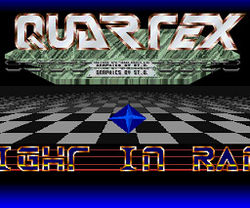
A crack intro, also known as a cracktro, loader, or just intro, is a small introduction sequence added to cracked software. It aims to inform the user which "cracking crew" or individual cracker removed the software's copy protection and distributed the crack.

The demoscene is an international computer art subculture focused on producing demos: self-contained, sometimes extremely small, computer programs that produce audiovisual presentations. The purpose of a demo is to show off programming, visual art, and musical skills. Demos and other demoscene productions are shared, voted on and released online at festivals known as demoparties.
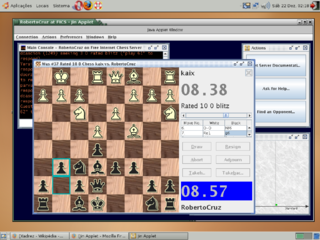
The Free Internet Chess Server (FICS) is a volunteer-run Internet chess server. It was organised as a free alternative to the Internet Chess Club (ICC), after that site began charging for membership.

In computer chess, a chess engine is a computer program that analyzes chess or chess variant positions, and generates a move or list of moves that it regards as strongest.
Mikrobitti is a Finnish computer magazine published in Helsinki, Finland.
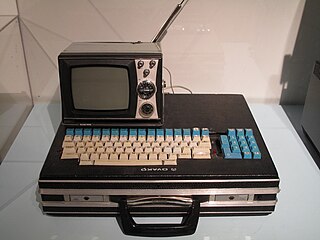
The Telmac 1800 is an early microcomputer that was delivered in kit form. It was introduced in 1977 by Telercas Oy, the Finnish importer of RCA microchips. Most of the 2,000 kits manufactured over four years were bought by electronics enthusiasts in Finland, Sweden and Norway.

1K ZX Chess is a 1982 chess program for the unexpanded Sinclair ZX81.

The Finnish Academy of Science and Letters is a Finnish learned society. It was founded in 1908 and is thus the second oldest academy in Finland. The oldest is the Finnish Society of Sciences and Letters, which was founded in 1838.
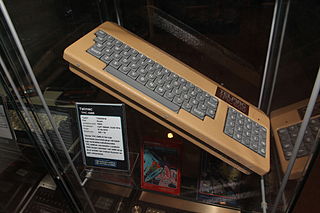
The Telmac TMC-600 is a Finnish microcomputer introduced in 1982 by Telercas Oy, a Finnish importer of RCA microchips.

Microchess, sometimes written as MicroChess, is a chess program developed for the MOS Technology KIM-1 microcomputer by Peter R. Jennings in 1976, and published by his company Micro-Ware. The game plays chess against the human player at a beginner level, with the player entering moves via a keyboard and the computer responding, both in a custom chess notation. The game was ported to many other microcomputers such as the TRS-80, Apple II, Commodore PET, and Atari 8-bit computers by Micro-Ware and its successor company Personal Software between 1976 and 1980, with later versions featuring graphics and more levels of play. A dedicated hardware version of the game called ChessMate was produced by Commodore International in 1978, and the game's engine was licensed to Novag for its dedicated Chess Champion Mk II chess computer in 1979.

The Dick Smith Super-80 was a Zilog Z80 based kit computer developed as a joint venture between Electronics Australia magazine and Dick Smith Electronics.
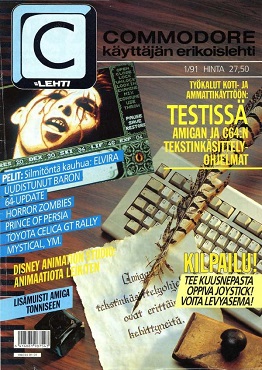
C-lehti ('C-magazine') was a Finnish computer magazine targeted specifically at Commodore computers. It was in circulation between 1987 and 1992.
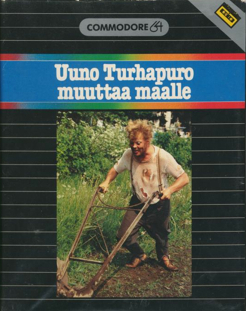
Uuno Turhapuro muuttaa maalle is a side-scrolling video game, available for the Commodore 64. It was developed by the Finnish programmer Pasi Hytönen in 1986 and published by Amersoft, one of the first game publishers in Finland. It is regarded as the first commercially successful Finnish video game, in part due to its subject matter and "near-sadistic difficulty".
Opening book is often used to describe the database of chess openings given to computer chess programs. Such programs are quite significantly enhanced through the provision of an electronic version of an opening book. This eliminates the need for the program to calculate the best lines during approximately the first ten moves of the game, where the positions are extremely open-ended and thus computationally expensive to evaluate. As a result, it places the computer in a stronger position using considerably less resources than if it had to calculate the moves itself.
Video gaming in Finland consists of a video game industry which includes 260 active video game developer studios, roughly a dozen professional players and countless enthusiastic amateurs.
The Finnish Games and Multimedia Association (FIGMA) was a Finnish trade association for video game publishers and distributors founded in 1999.

Kiekko-Espoo is a Finnish professional ice hockey club founded in 2018 as a continuation of the Kiekko-Espoo team originally founded in 1984. Kiekko-Espoo men's team plays in the Liiga, where they were promoted for the 2024–25 season, and the women's team plays in the Auroraliiga, where they hold the most championships of any club.
















